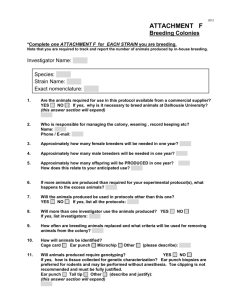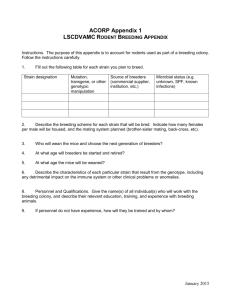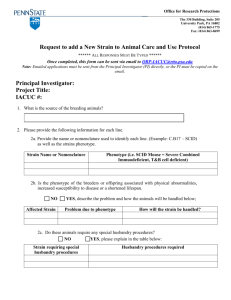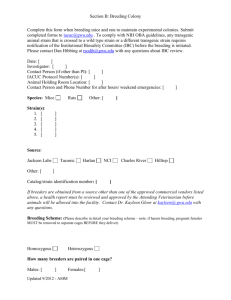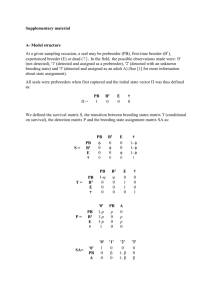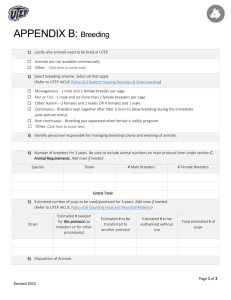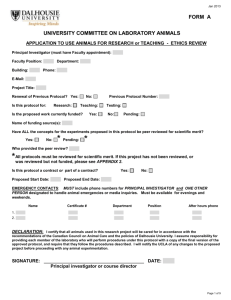attachment f - Dalhousie University
advertisement
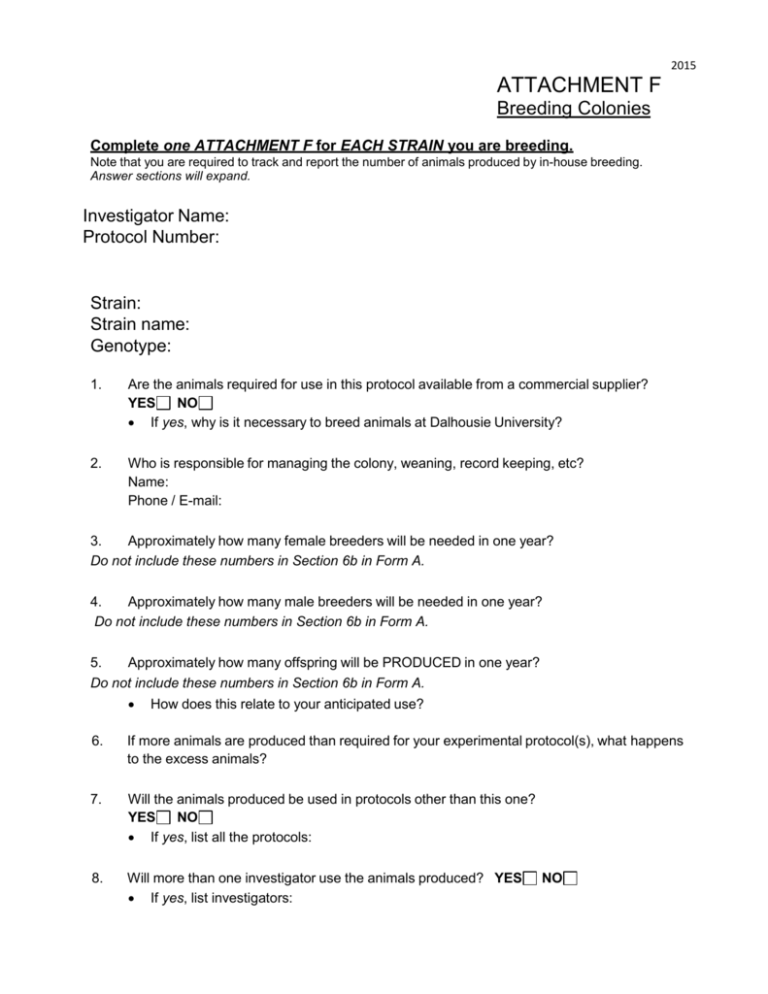
2015 ATTACHMENT F Breeding Colonies Complete one ATTACHMENT F for EACH STRAIN you are breeding. Note that you are required to track and report the number of animals produced by in-house breeding. Answer sections will expand. Investigator Name: Protocol Number: Strain: Strain name: Genotype: 1. Are the animals required for use in this protocol available from a commercial supplier? YES NO If yes, why is it necessary to breed animals at Dalhousie University? 2. Who is responsible for managing the colony, weaning, record keeping, etc? Name: Phone / E-mail: 3. Approximately how many female breeders will be needed in one year? Do not include these numbers in Section 6b in Form A. 4. Approximately how many male breeders will be needed in one year? Do not include these numbers in Section 6b in Form A. 5. Approximately how many offspring will be PRODUCED in one year? Do not include these numbers in Section 6b in Form A. How does this relate to your anticipated use? 6. If more animals are produced than required for your experimental protocol(s), what happens to the excess animals? 7. Will the animals produced be used in protocols other than this one? YES NO If yes, list all the protocols: 8. Will more than one investigator use the animals produced? YES If yes, list investigators: NO 2015 9. How often are breeding animals replaced and what criteria will be used for removing animals from the colony? 10. How will animals be identified? Cage card Ear punch Microchip 11. Tail tip Other (describe and justify): Anesthesia is required for tail tipping in animals older than 10 days. How old are the animals when tail tips or other tissue are collected? 13. (please describe) Will animals produced require genotyping? YES NO If yes, how is tissue collected for genetic characterization? Ear punch biopsies are preferred for rodents and may be performed without anesthesia. Toe clipping is not recommended and must be fully justified. Ear punch 12. Other Will animals be anesthetized when tissue is collected? YES NO N/A If yes, complete and include ATTACHMENT A (Anesthesia/Surgery) Are these animals genetically modified? YES NO If yes, what is the name and function of the gene(s) that has been modified? How does this modification relate to your study? If yes, are there any known traits that will affect breeding and/or lifespan? Describe any phenotypic abnormalities expected in these animals: If these abnormalities will cause pain or distress, how will you minimize or alleviate it?
